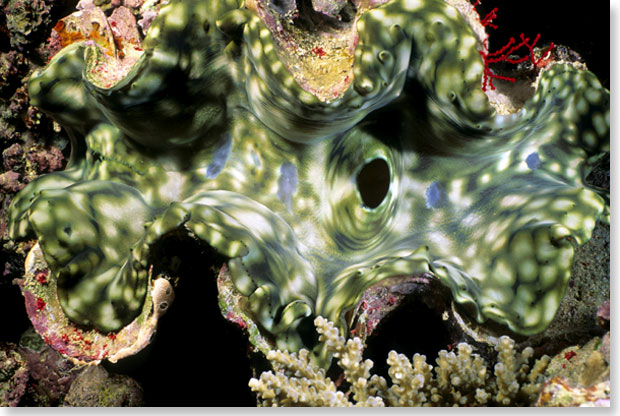Tridacna clams have hundreds of 'eyes' along the edges
of their siphonal tissue or 'mantle'.
As well as detecting
shadows that warn the clam
of potential predators,
these eyes are sensitive to
green, blue, and
ultraviolet light.
This helps the Tridacna better position itself toward
sunlight
to illuminate as much zooxanthellae algae as possible.
Zooxanthellae transform
carbon dioxide & dissolved nitrogen into
carbohydrates, glucose and amino acids for their
host clam.
With sufficient sunlight, zooxanthellae can provide
all of the
respiratory carbon requirements of a Tridacna,
while also producing the mantle's swirling cosmic
'color'.

